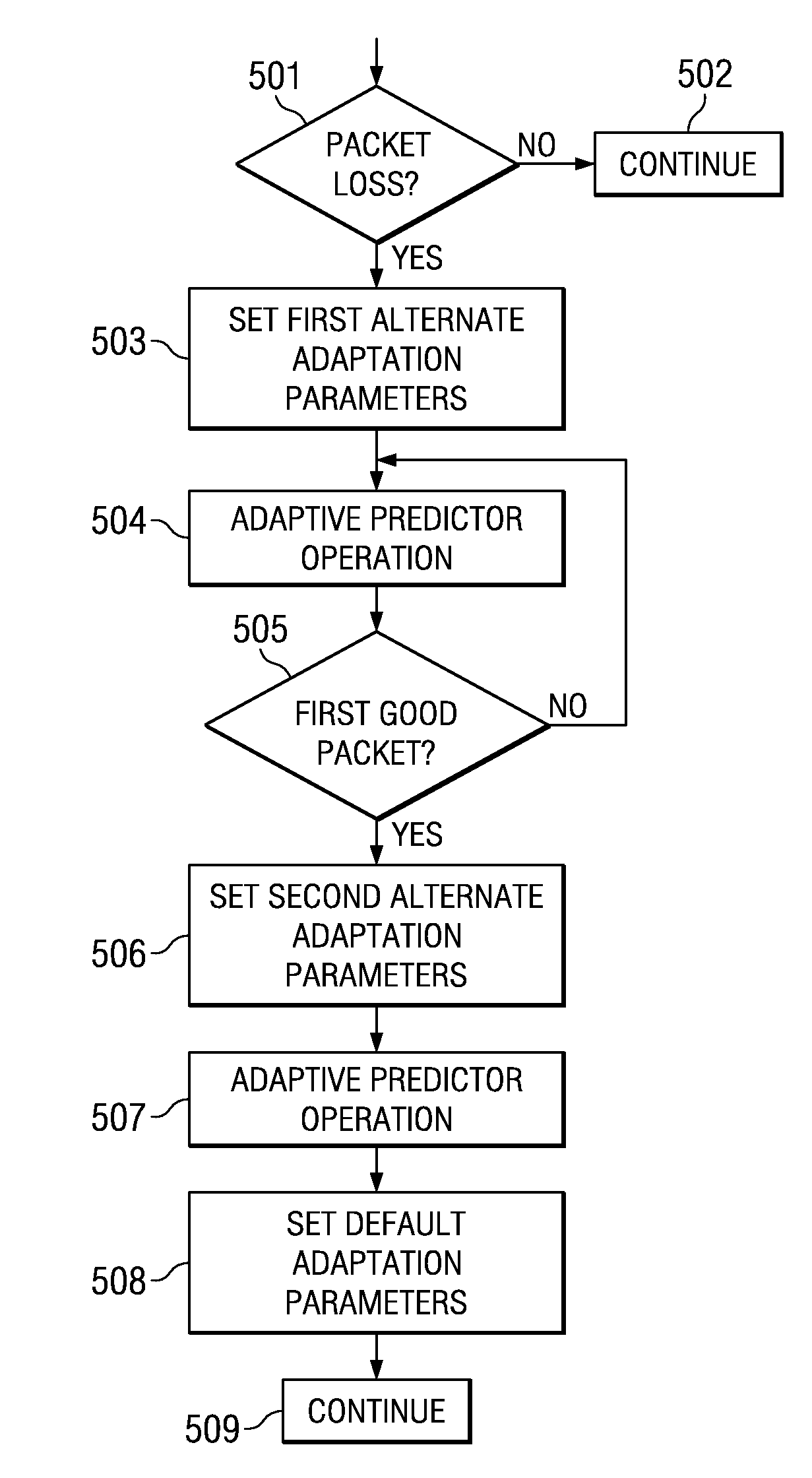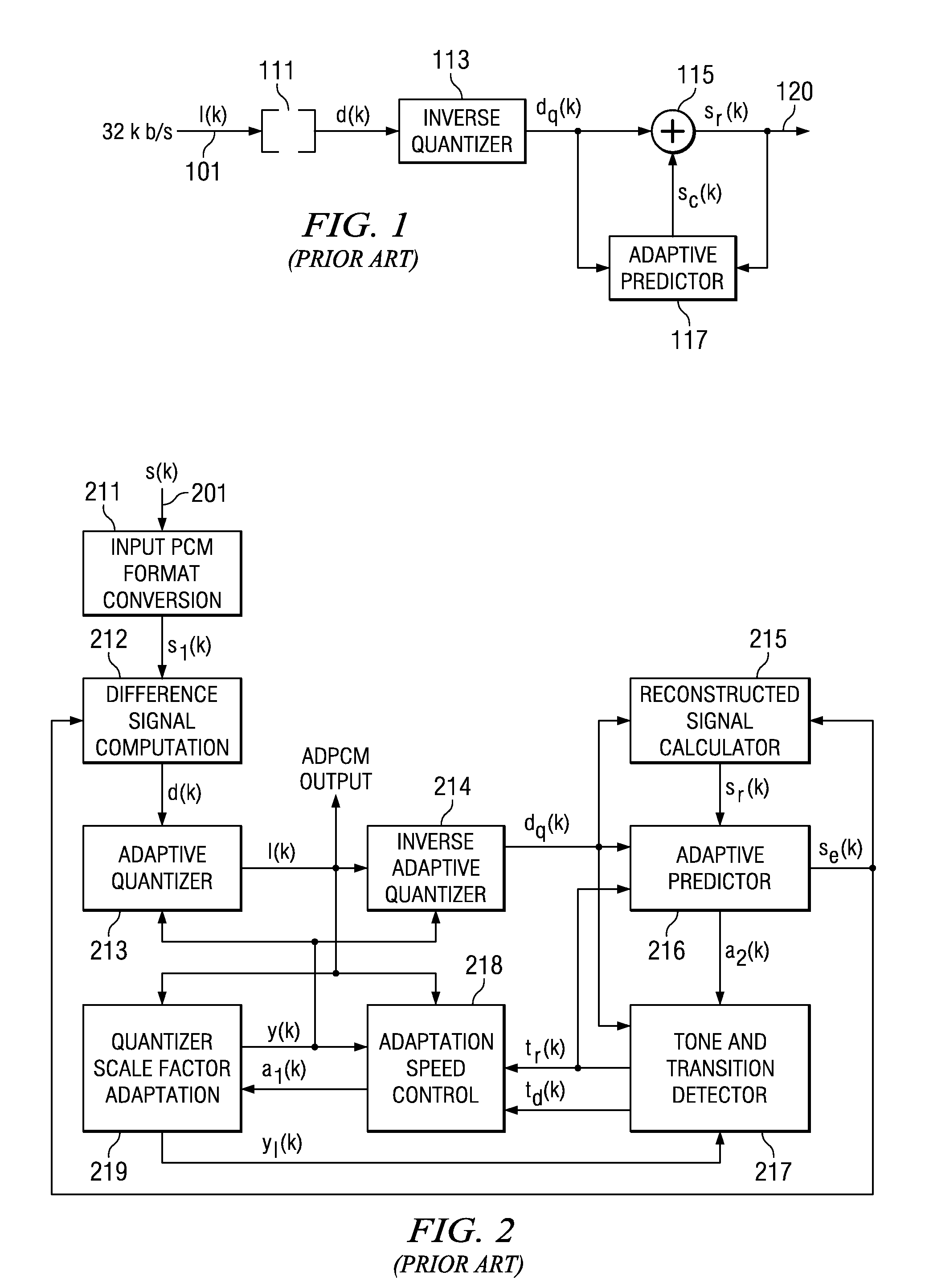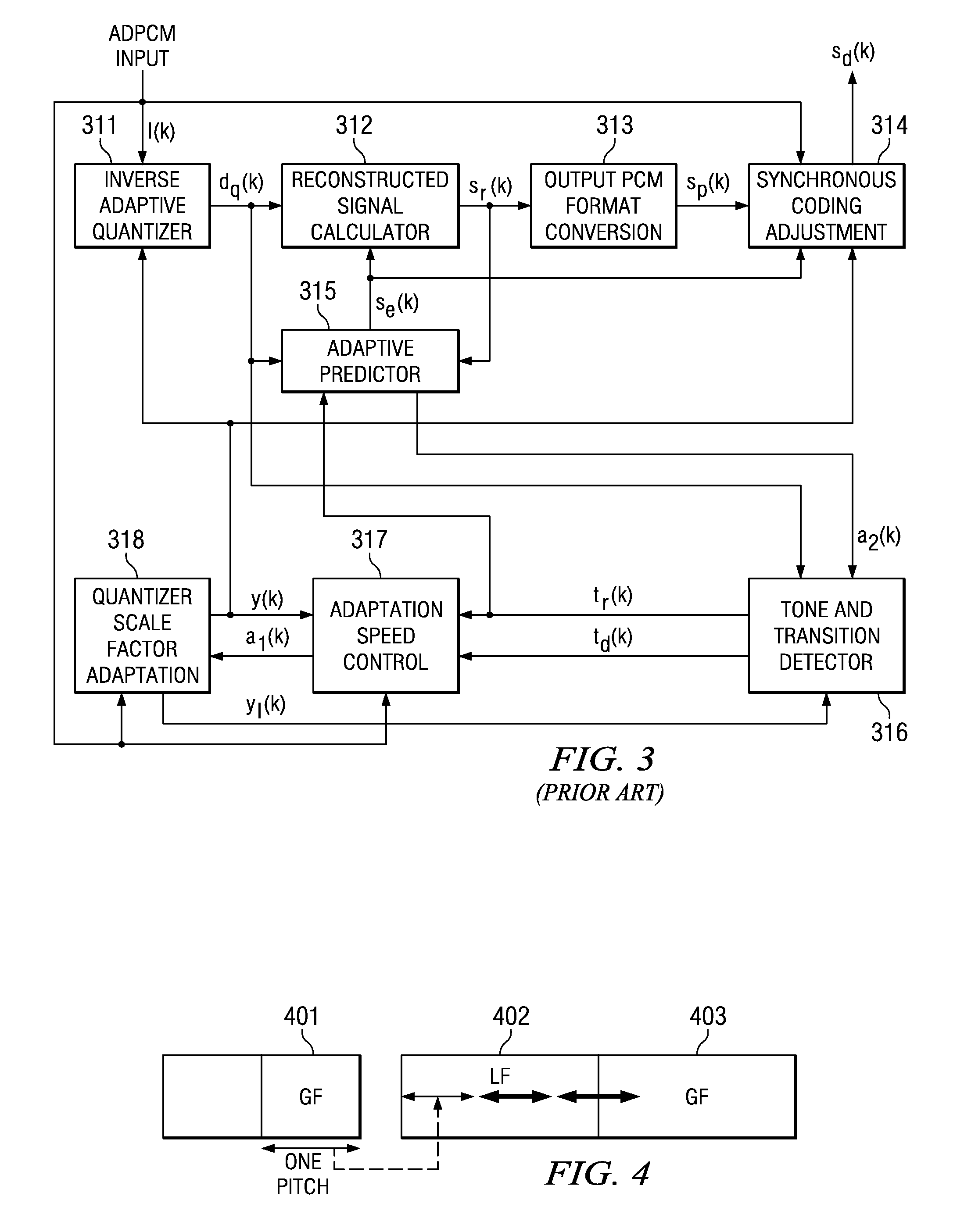Stabilization and glitch minimization for CCITT recommendation G.726 speech CODEC during packet loss scenarios by regressor control and internal state updates of the decoding process
a speech codec and packet loss scenario technology, applied in the field of speech data coding and decoding, can solve the problems of not supporting any mechanism for packet loss recovery, quality decline, glitches and artifacts are hard to compensate, etc., to minimize glitch artifacts, maintain compatibility, and reduce the impact of data processing capacity and memory
- Summary
- Abstract
- Description
- Claims
- Application Information
AI Technical Summary
Benefits of technology
Problems solved by technology
Method used
Image
Examples
Embodiment Construction
[0021]The G.726 standard predictor algorithm is sign-sign and hence its stability and operating conditions are sensitive to the persistency of the excitation. The standard typically uses regressor excitation.
[0022]FIG. 1 is a simplified block diagram of a G.726 standard decoder. In this example input 101 I(k) is 32 Kbits / sec. PCM converter 111 converts the PCM input I(k) into normal digital data d(k). Inverse quantizer 113 reverses quantization in the data d(k) provided by the encoder (not shown). The dequantized data dq(k) supplies one input of adder 115. Inverse quantizer 113 also supplies this dequantized data dq(k) to adaptive predictor 117. Adaptive predictor 117 receives another input from the output sr(k) of adder 115. Adaptive predictor 117 produces a prediction signal intended to track the encoder to the second input of adder 115. The output sr(k) of adder 115 forms the decoder output 120.
[0023]FIG. 2 is a detailed block diagram of a G.726 standard encoder. Input PCM format...
PUM
 Login to View More
Login to View More Abstract
Description
Claims
Application Information
 Login to View More
Login to View More - R&D
- Intellectual Property
- Life Sciences
- Materials
- Tech Scout
- Unparalleled Data Quality
- Higher Quality Content
- 60% Fewer Hallucinations
Browse by: Latest US Patents, China's latest patents, Technical Efficacy Thesaurus, Application Domain, Technology Topic, Popular Technical Reports.
© 2025 PatSnap. All rights reserved.Legal|Privacy policy|Modern Slavery Act Transparency Statement|Sitemap|About US| Contact US: help@patsnap.com



